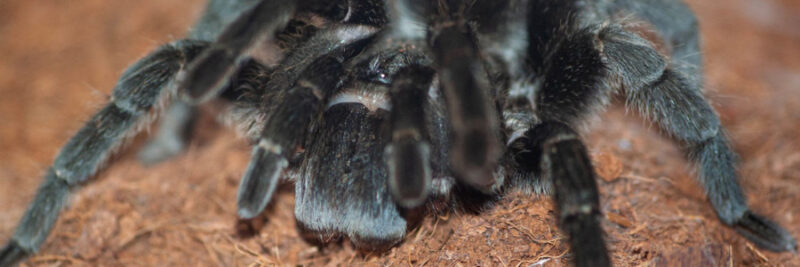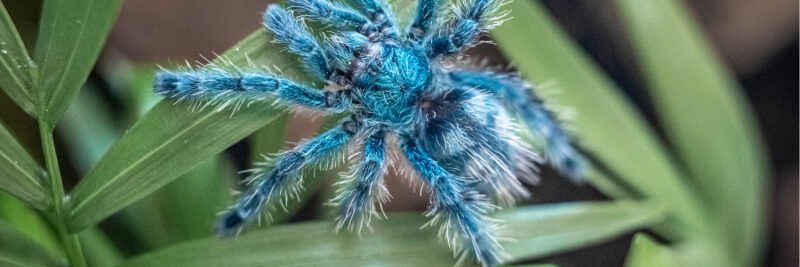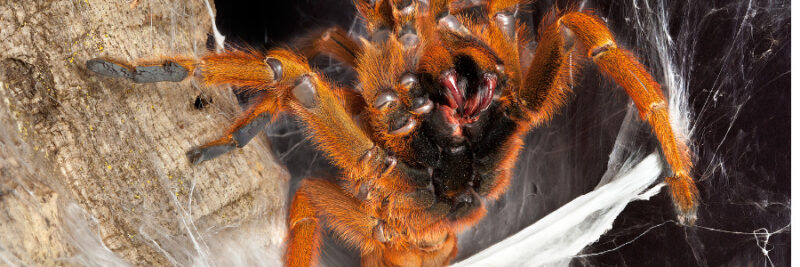An In-Depth Look at These Fascinating Creatures
Tarantulas may look scary, but for the right owner, they can make awesome pets. These eight-legged wonders exhibit intricate behaviors, come in a rainbow of colors, and each have unique personalities.
However, wading into advanced tarantula care is not something to take lightly. There’s a lot of vital information to digest if you really want to thrive in this hobby. But have no fear – I’ve got your back.
My goal today is to level with you in an easy, conversational way about everything from evolutionary history to breeding techniques. I want to speak to the budding expert ready to take their tarantula passion to the next level without glossing over the nitty gritty details. There’s so much misinformation and half-truths out there, we’ve gotta cut through the noise if we want what’s best for these remarkable creatures.

So whether you’ve kept tarantulas for awhile and want to expand your skills, or you’re just tarantula-obsessed and determined to learn it all, stick with me. By the end, you’ll have a comprehensive game plan for advanced arachnid care with all the coolest tricks of the trade.
Let’s start our journey with some Tarantula 101 before diving headfirst into the complex stuff…
A Crash Course on Tarantula Basics
I don’t want to insult your intelligence if you’re not a total newbie, but a quick refresher never hurts. Here’s a rapid-fire overview of tarantula fundamentals:
Tarantula Family Tree
All tarantulas belong to the Theraphosidae family of the Mygalomorphae infraorder. This group diverged from other spiders over 150 million years ago when the first proto-tarantulas emerged. There are currently over 1,000 identified tarantula species.
Habitats
Most tarantulas are ground dwellers adapted to burrowing and hiding. Rainforest species tend to be arboreal, living in trees. Desert species stay underground to escape heat.
Lifespans
Some species live over 30 years in captivity! Females considerably outlive males.
Growth
Tarantulas keep molting to grow. They can take 3-10+ years to reach full size depending on sex and species.

Defense
Tarantulas have irritating urticating hairs on their abdomens they flick at attackers. Some also have venom used mainly to subdue prey but can be medically significant in rare Old World species.
Eating
All tarantulas are carnivores who eat mainly insects/other arthropods but larger species can kill small vertebrates.
Communication
Tarantulas “talk” by vibrating their bodies and releasing pheromones. Their hairs also detect air vibrations.
Got all that? Excellent! Now we can dive deeper…
Choosing an Advanced Species

The possibilities may seem endless once you move past beginner species, but choosing advanced tarantulas comes down to:
Your Experience Level
Be honest – are you truly ready? Don’t rush into a Pokies communal if you’ve never kept baboon tarantulas.
Difficulty Factors
Consider speed, defensiveness, urticating hair flicking, venom potency, size, etc. Know your limits!
Special Requirements
Are you equipped to provide higher heat, specific substrates, or trickier feeding regimens? Can you find obscure species from ethical sources?
Personal Preferences
Key in on traits that appeal most to YOU, not what’s coolest. Maybe you adore arboreals or want a display worthy centerpiece tarantula. Staying true to your unique interests ensures the highest enjoyment and success.
Here are some standout advanced species to consider:
Poecilotheria
– Ornamental “Pokies” have stunning markings but can move lightning fast with potent venom. Intermediate high speed handling is required.
Psalmopoeus
– Swift arboreals like the Trinidad Chevron need large, complex enclosures with specific temperature, humidity and substrate needs.
Haplopelma
– Aggressive Asian species including Cobalt Blue, Thai Black and Chinese Fawn display brilliant coloration but have nasty attitudes to match! Better suited to display.
Xenesthis
– Colombian Lesserblacks reach 8″ legspans, live 35+ years and necessitate serious housing upgrades over time.
Cyriopagopus
– Massive Asian genera featuring the heterogenic Tiger Ornamental and iridescent Blue Femur Burrower. Not for the faint of heart!
Brachypelma
– Though beginner friendly species exist, advanced keepers adore breeds like Redrumps and Boehemi for their celestial leg spans and challenging husbandry.
This is just a small sample – so much diversity exists! Once you settle on genera, research specific locale variants and bloodlines. Wild caught specimens require extra vigilance regarding parasites and pathogens upon import. There’s always room to grow your skills and expand into additional species – the key is knowing current limitations so no tarantulas suffer from our neophyte mistakes.
Elevating Your Husbandry Standards
Caring for next-level tarantulas means maxing out housing, feeding, handling/interaction protocols. I completely understand loving these creatures to the moon and back – I do too! But we must balance affection with practical enrichment strategies benefiting tarantula mental/physical health above satisfying strictly human inclinations.

Here’s the tea on creating a five star tarantula resort:
Enclosure Selection
Acrylic, glass or mesh/screen cages have respective advantages by species depending on ventilation needs, humidity retention, display visibility, security protocols and other variables in play. Budget allowing, invest in high clarity front-opening designs for prime viewing without disruption. Custom builds enable you to provide specialized dimensions difficult to source commercially.
Substrate Secrets
Not all dirt is created equal! Achieving proper moisture retention and burrow integrity requires next-level substrates matching native soils. Clays, fine barks, peat mixes, loams and composts each impart unique properties. Always sterilize materials before use to prevent mite/fungal issues. Consider springtail cages and isopod bins to seed cleanup crews boosting bioactivity.
Temperature & Humidity Mastery
Climate control technology has come a long way! Programmable thermostats, pulse proportional regulators, humidistats and other gadgets provide precise micro-conditions. Depending on variables likeheat mats, Ceramic Heat Emitters, foggers/misters and dehumidifiers might become necessary for advanced environmental stability. Don’t forget hygrometers and thermometers to monitor conditions.
Enriching Decor
Offer multiple hide options, vertically inclined cork bark, durable plants (sans pesticides), hollow logs, branching wood structures and leaf litter to encourage natural behaviors. Every two weeks, shift elements to create “new” spaces. Construct hides snug enough for wall pressing security. Always include larger hides allowing for future growth.
Food & Water
Match prey size to leg span and feed appropriately sized feeders no larger than the abdomen. Try varied insects like horn/meal worms, roaches, crickets, locusts, etc dusted with calcium and vitamins. Supply a small, shallow water bowl cleaned weekly. Avoid gel products lacking proper hydration.
Cleaning & Maintenance
Completely replace substrate every 4-6 months or if growing fungus/mites. Spot clean urates/boluses between full cleans. Check decor, hides and plants for growing mold. Replace water bowl contents 1-2 times weekly. Freshen leaf litter monthly. Monitor for pests and quarantine plants/woods pre-install.
Crushing advanced husbandry seems overwhelming at first glance but simply break tasks into weekly/monthly checklists. Consistency keeps everything sailing smoothly!
But what about actually interacting with these beauties?
Advanced Handling & Bonding Considerations
I must start by admitting straight away – no amount of “bonding” will make a tarantula love you back. They operate on instinct lacking complex emotions. Let go of dangerous anthropomorphic urges to cuddle, hold, pet or kiss them!
However, advanced keepers absolutely can achieve neutral interactive trust through respect, patience and positive reinforcement. Our primary goal remains minimal disturbance of tarantula natural behaviors. They don’t exist for our amusement or desire for affection.
Keeping hands off avoids many handling issues but for necessary maintenance, employ these tips:
- Wait 48 hours after feeding before handling to allow proper digestion.
- Coax onto a soft paintbrush, piece of bark, or palm of hand versus grabbing if possible.
- Always support the entire spider body length, move slowly and keep low to the ground.
- Limit handling to 5-10 minutes max for minimal stress.
- Approach from the front versus above to avoid resembling predatory birds.
- Remain calm and avoid breathing directly on them during procedures.
- Allow tarantula to walk off hand into enclosure versus placing to promote choice.
Repeat positive handling frequently but briefly when young to acclimate them. Minimize interactions pre-molt when more vulnerable and skittish. Some individuals remain too high strung for much handling ever – respect their boundaries.

With routine gentle interaction, species amenable to human company learn to associate your presence with security, allowing peaceable handling when required. This neutral trust bonds advanced keepers and docile spiders cooperatively over time through positive reinforcement. But repetitively push limits, and you rupture this delicate relationship, risking catastrophe. Move cautiously, breathe deep and lead with empathy.
Speaking of risks…let’s talk emergency protocols for when crisis strikes against all odds. God forbid, but freak accidents happen!
Emergency Protocols, Health Issues & Supplies
Even flawless husbandry practices can’t eliminate every potential disaster, injury or illness. Oceanic climactic events disrupt imports. Feeder insects introduce pathogens. Stress and poor genetics trigger disease. Recognize when to enact emergency intervention!
Injury/Accidents
Falling, dropped enclosures, pet disasters and cage mates attacks require urgent aid. Have an isolation hospital enclosure prepped with paper towel substrate and hide. Sterilize any puncture wounds/hemolymph leakage gently with saline solution. Apply antibiotic ointment to prevent infection. Allow 48 hours undisturbed recovery before reintroducing.
Loss of Limbs/Molt Issues
Faulty molts happen randomly. Providing overhead anchor points via cork bark and plants can prevent falls resulting in ruptured abdomens and lost legs. Remove damaged limps at the hip joint. Ensure proper humidity/temperatures and nutrition for future healthy molting.
Toxins/Pesticides
Insecticides, fumes/cleaners, oils and fragrances harm tarantulas. Eliminate chemical use around them! Seek immediate vet assistance if poisoning occurs.
Hard Falls
Falls over 18 inches onto hard surfaces often prove fatal. Always handle low to the ground.
Abdominal Ruptures
Can occur from injury, over feeding, bad molts, even “kicking” hairs. These are critical emergencies! Surgical repair may succeed but consult an *exotics experienced* veterinarian ASAP!
Respiratory Infections
Labored breathing, fluid discharge and loss of appetite signal issues. Talk to a vet, ensure proper temperatures and evaluate humidity levels while isolating.
Egg Binding
Dystocia, or issues laying eggs, afflict some females. Schedule an emergency vet visit if straining over 24 hours to save her life!
Mites & Health Issues
Tiny pests like mold mites arrive on feeders or plants, multiplying rapidly. Remove accessories immediately, increase heat into the 90’s for days to kill them off and totally sterilize the enclosure & spider.
Death Curls
Dreaded death curls with legs pulled under indicate terminal illness. Generally untreatable once appearing. You can try ICU care by warmth/hydration but success is unlikely. Say goodbye…
Having emergency action plans takes the panic out of crisis situations so we can respond effectively when that midnight disaster strike. But what about illnesses caught early before critical stages?
Recognizing Emergent Health Concerns
Catching problems early makes treatment easier. Note these red flags:
- Lack of appetite/weight loss
- Failure to molt
- Lethargy
- Bald spots
- Twitching/tremors
- Darkening abdomen
- Defensive postures
- Discoloration
- Strange deposits
Declining parameters warrant veterinary diagnostics. Be prepared to describe enclosures, husbandry routines, feeding, recent acquisition/imports and other key husbandry factors. Have sterile transport containers ready for bringing samples or the spider itself if required by the vet.
Critical Supplies Checklist
Always house emergency medical supplies in one central crash cart location. My “go bag” contains:
- Extra large/small sterile plastic transport containers
- Antibacterial ointment packets
- Adhesive bandage rolls
- Gauze pads/wraps
- Medical tape
- Blunt tip scissors (varied sizes)
- Irrigation syringe
- Sterile saline wounds wash
- Digital thermometer with probe
- Digital kitchen scale
- ICU heat mat, thermostat, hygrometer
Of course I hope never needing these preparedness measures. But acquiring advanced species means planning for the worst while still expecting the best!
Now let’s switch gears into the REAL advanced stuff – reproduction!
Breeding Elite Tarantulas

Are your spider keeping skills polished enough to attempt pairing project? Producing gorgeous spiderlings combines art and science but requires next-level mastery of biology, genetics, timing, behaviors and patents.
Mating Behaviors
When mature, male tarantulas wander searching for ladies by smell, touch and vibrations. If mutually receptive, the dance begins! He taps her, they interlock fangs and he inserts sperm webs into her genital operculum. She usually snacks on him afterwards since his job concludes!
Signs of Maturity
Males maturing around 6-7 years old grow longer legs/pedipalps. Females nearing 5-12 years old possess a rounded, golden-brown abdomen with visible spermathecae through the cuticle.
Preparing Partners
Once sexually mature, begin conditioning partners 6 months prior to potential pairing. Simulate rainy seasons with increased temperatures. Power feed individuals massive variety diets and monitor weight gains indicating reserves for sperm/egg production.
Facilitating Hookups
Introduce mature opposite sex partners in neutral territory like a 10 gallon aquarium. Dim lighting, stuffed with hide options and lined with familiar substrate encourages natural behaviors. Monitor closely to intervene before actual physical harm if signs of aggression arise. Never leave unattended!
Egg Production/Incubation
Successfully mated females produce an eggsac 30-60 days later harboring up to 2,000 eggs! Carefully remove and incubate in sterile containers between 80-85 degrees on perlite substrate. Expect tiny spiderlings to emerge 6-8 weeks later.
Raising Spiderlings
House babies communally 10-20 per deli cup lined with fragile egg crate bottoms. They readily cannibalize so provide springtails/pinhead crickets continuously. Transfer to individual homes around 2 weeks old before nastiness occurs!
That covers the basics but I’ve truly just skimmed the surface here – breeding could encompass its own expansive book. And it rightfully should – these invaluable endeavors further showcase just why advanced tarantula devotees find them so endlessly captivating!
I sincerely hope this guide illuminated key aspects of upper level tarantula keeping for you. But in case any specific questions remain, let’s wrap up with a quick FAQ:
Frequently Asked Questions about Tarantula Keeping
The Asian King Baboon tarantula is likely the most notoriously defensive and aggressive species, known for their threat displays and hair kicking. They contrast beautifully with their fiery orange knee striping but require experienced handling.
Depending on size, age, and species variables, offer adult tarantulas one appropriately sized feeder item every 7-14 days. Overfeeding risks shortening lifespans and even ruptured abdomens.
Because male's sole purpose relates to roaming in search of mates, they reach maturity quicker and don't live nearly as long as females. Less biomass supports their lifestyle. Females diverst energy towards much larger egg production instead.
Arboreal tarantulas like the Pinktoe Tarantula live in trees and traverse more vertically. They require taller enclosures with more climbing opportunities than terrestrial ground dwellers.
Well, those queries should further equip you for domination in the advanced tarantula keeping realm! Remember, patience and vigilance becomes your strongest ally. Master that unbreakable resolve, and you SHALL move tarantulas mountains!
Until next time my friends…thanks for letting me be your guide! Go gently into that good night – our eight legged companions deserve no less.
